Thomas E. Ricks's Blog, page 110
May 6, 2013
Tony Judt on academic historians: Facing a huge market, but unable to address it

Quote of the day is from
Tony Judt, now unfortunately gone: "the market for history books is enormous,
but most professional historians are simply unable to satisfy it." (P. 263, Thinking the 20th Century)
By the way, Judt's book Postwar is essential reading for, among others, anyone interested in the
effect of World War II on Europe.
May 3, 2013
Rebecca's War Dog of the Week: Two years later, the war-dog photo seen 'round the world

By Rebecca Frankel
Best Defense Chief
Canine Correspondent
While watching the April 21st 60 Minutes segment on Special
Ops dogs, I wasn't at all surprised to see that they ran the above photo of a
U.S. Army handler with the 10th Special Forces Group and his MWD jumping off
the ramp of a CH-47 Chinook helicopter into the Gulf of Mexico on March 1,
2011.
It's now been two years since we ran
that photo as the opener to my FP photo essay "War
Dog," after which the piece and the image
went viral. At the time, people incorrectly assumed that I had taken the
photo. I hadn't, of course. But the man who did was Tech. Sgt. Manuel J.
Martinez, a career military photographer with the Air Force. I spoke with
Martinez this week to find out what was going on behind the lens that day and
to get the story of what's likely the most widely recognizable -- and most
often used -- war-dog image of modern day.
As a combat photographer with flying status, Martinez, originally
from a small town in New Mexico, has had a wild range of assignments -- from
covering the wars in Iraq and Afghanistan to riding along on search and rescue
missions in the aftermath of Hurricane Katrina. It was during the Katrina
mission that Martinez shot
a photo of a little boy being hoisted in the arms of Tech.
Sgt. Lem Torres up into a helicopter from the roof of his flooded home.
For Martinez, the experience was life altering. It was, he said, the first
photo he took that really mattered.
He had no idea that some six years later, while cramped in
the back of a CH-47 Chinook watching Special Ops teams
run through routine water-training exercises, he would be taking what would
become his most famous photo. They loaded the helicopter again and again,
picking up SOC teams and dropping them the roughly seven feet from the
helicopter into the water. Even if it was something of a rote mission, the guys,
Martinez remembers, were having fun. "Everybody was all excited, all hyped. It
was the Gulf of Mexico...it was beautiful."
But when Martinez saw on one of their
pick-ups that they were loading a dog into the helicopter, he thought, "Holy
crap. I have to get ready for it."
The dog team was the last of the teams
to take their jump that day. And when it was their turn to go, the other men,
already in the water, were cheering them on -- men who are also captured in
this image. As many times as I've looked at this photo,
it was something I'd never noticed before. But Martinez pointed them out to me,
directing my eyes over the phone. If you look at the dog's muzzle, you can see
them -- small and faint in a thin, vertical line, like gray shadows in the pink
water. You can even see that the man who appears closet in the frame has his
arm raised in triumphant encouragement.
In the end, Martinez says, the moment was fleeting. The dog
team jumped out of sight and the helicopter returned to base.
Perhaps the most incredible thing that Martinez revealed during
our conversation was the answer to a question I've had since the very first
time I saw this photo, and one I've heard debated ever since. Did this dog jump
willingly or did he have a little...help?
According to Martinez, the dog "did hop
out" on his own steam.
From his vantage point in the Chinook, Martinez
could see that the handler had his hand on the dog's harness, coaxing the dog, who
hesitated, even if only slightly, at the edge of the ramp. "Ultimately,"
Martinez said, "it was the dog's effort."
When handler and dog jumped down into
the water, they jumped together.
Rebecca Frankel is away from her FP
desk, working on a book about dogs and war.
Responding to the admirals: A friend poses some questions about carriers
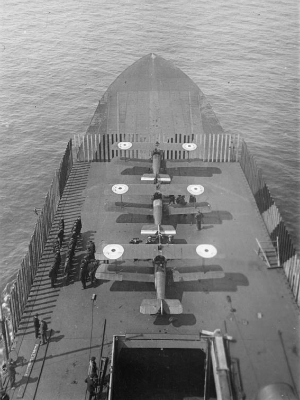
The other day FP
carried a standard carriers-are-great piece by a trio of admirals. A friend
of mine, appalled at what he regarded as the ostrich-like views of the high-ranking authors, sent a corrective note to me:
Key questions to be
considered would be:
To what degree will China
be able to impede our ability to freely use carriers in the Pacific in the
future?
How willing would U.S.
political leadership be to commit carriers in a high-threat environment
where China would view a negative outcome for them as a threat to the survival
of the Party (recognizing that in that culture every defeat, even small ones,
are a threat to the survival of the Party)?
Would POTUS commit a
carrier if there was a 10 percent chance it would be hit?
How about 20 percent, or
30 percent?
How many of the vertical
launch tubes on the destroyers and cruisers are committed to defending the
carrier vs. carrying Tomahawks to carry out power-projection missions?
When does the Navy come in
a la Bay of Pigs and say that it can only operate carriers forward to
accomplish the mission if it is allowed to hit targets on the mainland,
placing CONUS at risk to reprisal, and how does the president respond?
When does the POTUS realize
that for years we have built platforms that we cannot afford to lose, either in
monetary cost or the cost of lives? That is the key question. Rule number three
of war is never build a weapon that you cannot afford to lose or have defeated.
We seem to proceed on an assumption that no one will ever attack our carriers. I
think the Chinese will see themselves as being in a position that they cannot
afford NOT to attack our carriers.
How does this all affect
our position vis a vis Japan, the Philippines, Australia, and India? All of
those relationships will be at risk if we don't have an alternative.
Final thought: The Navy has already accepted that the fleet is going to shrink
to 270 ships, and I am here to tell you that it will go smaller than that,
probably 230 before this is all done. This is largely because all of those
ships that were built by Reagan are all retiring at the same time and we are
not building replacements at the same rate right now. That will be the price of
maintaining 10-11 supercarriers at $12-13 billion with an annual shipbuilding
budget of $15 billion. The price will decrease overall naval presence, and raise
questions as to the U.S. commitment to local security concerns.
Tom calls for expelling Texas from the Union: Should have been done long ago

I'm just sick
of ‘em and all their BS. The piece runs in the Sunday Washington Post.
More relevant to this blog, my
boss at Foreign Policy, Susan Glasser, wants to do away with "red lines." But
then how will people from Silver Spring and Bethesda get to work?
May 2, 2013
Benghazi (II): A military analysis of the Fox mystery man's fantasy rescue plan

By Billy Birdzell
Best Defense guest columnist
On April 30, 2013, Fox News aired an interview with a supposed
member of U.S. Special Operations Command who said that members of "C-110," who
were training in Croatia on September 11, 2012, could have both arrived at the
Benghazi consulate in 4-6 hours and arrived before the second attack on the annex
during which Tyronne Woods and Glen Doherty were killed. The mystery man
critiques the Obama administration's decision-making, yet offers no information
as to how C-110 would have influenced the battle in such a way that the outcome
would have been different. Perhaps because it was actually impossible for C-110
to arrive before the attack, and if they did, they would not have been able to
do anything that would have prevented our heroes, Woods and Doherty, from being
killed.
"C-110" stands for Charlie Company,
1st Battalion, 10th Special Forces Group. It is a unique company within the
10th SF Group in that it is trained as a Commander's in-Extremis Force (CIF). Each
of the five active duty SF Groups has a CIF and they respond to important
threats within their geographic area which are below the threshold for, or
availability of, elements from the Joint Special Operations Command (like the
Delta Force). A CIF has approximately 40 operators.
According to the Pentagon timeline posted by CNN, the
enemy attack began at 2142 and all US personnel were out of the consulate by
2330. By 2330, Ambassador Christopher Stevens and the foreign service
information officer, Sean Smith, were dead. President Obama was briefed at 2300
and SOF were approved to launch from Croatia (C-110) and the United States (Delta
Force) at 0239 and 0253 respectively. At 0515, the attack began against the annex.
Doherty and Woods were killed by mortar fire shortly thereafter.
Obama gave the launch order at 0239. The
mystery operator said 4-6 hours. That's 0639-0839. Woods and Doherty died at
0515. An Air Force C-17 was evacuating personnel from the Benghazi airport at
0740. Mystery man and Fox News can't add. Strike one.
For argument's sake, assume Obama
gave the launch order 10 minutes after he met with General Dempsey and
Secretary Panetta at 2300. Four to six hours turns into 0310-0510. Six hours,
however, would have been impossible.
If the Commander of European Command
coordinated with his counterpart in Africa Command as soon as the National
Command Center informed General Dempsey at 2230 and they diverted a C-17 to
Croatia in anticipation, it is still highly unlikely the plane would have been
on the ground in Croatia before midnight; it takes an hour to fly to Croatia
from Germany and a crew would have had to have gotten ready, briefed, examined
contingency plans, and fueled the plane. From Zaton Military Airport in
Croatia, it is over 900 miles to Benghazi, which would have taken approximately
two hours in a C-17 cargo plane. Zaton is on the coast and it more likely the
CIF would have flown out of Udbina Airport, but this is a best case scenario.
Assuming the Air Force was willing to
land a C-17 at the Benghazi airport with an unknown security
situation, once on the ground, the 40-man CIF would have then had to
have moved to the annex which was 30 km away. Moving such a far distance
would have required vehicles. 40 operators can move in 8 HMMWVs, which can fit
into one C-17. However, did they have the vehicles with them? Did they have
everything on the training mission that they needed to go into combat? If not,
it would have taken more time for someone to get everything ready. Maybe the man
of mystery is creative and planned on renting cars from Avis (yes, Avis has a location at the Benghazi
Airport) and using stealth to get to the consulate in a move akin to the French
using taxis to get to the front in order to stop the Kaiser's hordes back in
1914. Mystery man is really a cook who has never been on a deployment. Strike
two.
Even if one of them had Avis First
and the cars were waiting on the runway, the timing would have been iffy.
Parachuting would have been another option. There is a large, open field close
to the U.S. consulate at the southwest intersection of Third Ring Road and Shan
Al-Andulus Road that could have accommodated the CIF. However, one is
defenseless while parachuting, so it is a good idea to insert a good distance
from the action to ensure one is not shot before his boots hit the ground. The
Benghazi Zoo is only 3 miles from the consulate and the combination of trees
and animal cages would have provided good cover, as well as entertainment, in
case someone saw 40 people parachuting into the middle of the city.
Assuming magical planes were waiting
for the CIF and they were somehow able to physically get to the annex before
0515, mystery man failed to mention that Doherty and Woods were killed by
mortar fire. Forty operators armed with rifles and light-machine guns can
neither stop mortar rounds nor determine from where the mortar is being fired. The
only thing the CIF would have done had they gotten to the annex before 0515 is
created more targets and overcrowded the consulate.
Even if the CIF was on ready 5 (fully
armed, sitting in the aircraft with pilots at the controls) in Sigonella (the
closest European base to Benghazi) with advanced warning of an attack but
unsure of the time, and they launched at 2232 on only-in-Hollywood orders from
someone other than the president, they would not have been able to do anything
about Stevens and Smith's deaths, nor stopped the mortar rounds. Strike three.
The person in the interview is a
clown and I am incredibly disappointed in the news for not using Google.
Billy
Birdzell served as a U.S. Marine Corps infantry officer and special operations
team leader from 2001 to 2009. He is currently pursuing a master's degree in
security studies at Georgetown University.
Benghazi (I): Does Fox News have a scoop with its cloaked Special Operator?

Not from what I
am hearing ‘round the barnyard. Here's an example, from retired Special Forces
Col. David Maxwell, on the record and everything, about Fox's ‘scoop' saying SF could have responded to
Benghazi in time:
Whistle
blower my a**. If this guy is a real special operator (and I have my doubts) I
wonder if he realizes what an embarrassment he is to the community. What he
offers is pure speculation and not based on any real facts as I have heard and
appears to be coming from his fourth point of contact. He comes across as just
another conspiracy theorist who is taking Fox News for a ride.
Thank you, Commander Bell
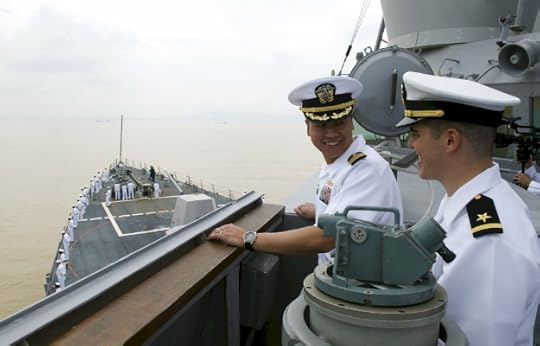
By Commander H.B. Le,
U.S. Navy
Best Defense guest
columnist
On
April 30, 1975, a 34 year-old South Vietnamese Navy commander -- the commanding
officer of Nha Be Naval Support Base near Saigon -- navigated a small fishing
trawler towards the South China Sea. Saigon had just fallen, and the trawler,
crowded with 200 refugees, cautiously weaved its way down the Soi Rap River. In
the span of just a few hours, as other refugees were plucked from smaller or
sinking boats, the passengers had swelled to 400. After two uncertain days at
sea and on the first birthday of the commander's youngest child, the refugees
were taken on board the tank landing ship USS Barbour County (LST 1195).
On
November 7, 2009, along with the U.S. 7th Fleet's flagship USS Blue Ridge (LCC 19), my ship arrived in
Da Nang, Vietnam for a scheduled goodwill port visit. This visit was my first
return to Vietnam since my father, mother, and three of my seven siblings and I
departed in that fishing trawler. My father had navigated the trawler to sea,
and, for me, navigating USS Lassen
(DDG 82) into Da Nang Harbor brought me full circle to our past.
During
that unforgettable port visit, I was interviewed by local and international
news media. Most questions dealt with my thoughts on returning to my native
country. Like my siblings who had come to America in 1975, I have always felt
fortunate to grow up in the United States and to enjoy all the opportunities
this great nation offers. It was a privilege for my sailors and me to represent
USS Lassen and the U.S. Navy to the
people of Vietnam.
It
was also deeply moving for me to travel to my birthplace of Hue, joined by one
of my older brothers who had graciously flown from Singapore, where he worked. Hue
is just 50 miles northwest of Da Nang, and I was grateful for the opportunity
to spend a few hours reuniting with two aunts, an uncle, and extended family
members.
Throughout
the port visit and for several days afterwards, I received heartwarming e-mails
and notes from family and friends, as well as from people I did not know. Easily
the most remarkable was a short letter I received in the ship's mail on
November 18, eight days after USS Lassen
departed Da Nang Harbor:
Commanding Officer
USS Lassen
(DDG 82)
FPO AP 96671-1299
November 6, 2009
Dear Captain,
Congratulations on your command. I read with
interest the press release about your visit to your homeland. I was the
Executive Officer of the USS Barbour
County (LST 1195) at the time of your rescue. I have wondered throughout
the years what became of the myriad people we took on board and transported to
the Philippines (Grandy Island). Again, congratulations and enjoy your tour.
Sincerely,
//s//
Russ Bell CDR, USN (Retired)
I was thrilled when I read the letter and
e-mailed my father right away. He wrote in response from his home in Virginia:
We
finally have the opportunity to express our gratitude to one of the people who
saved us and gave us a new beginning in the United States of America. Would you
please send our thanks to CDR Russ Bell and his crew for helping and saving us
at sea on May 2nd, 1975 and bringing us to Freedom? I still remember that on
the 3rd of May, the XO was the one who gave me an envelope and then helped to
send my letter from the Barbour County
to Uncle Ed Rowe at his parents' address in Kansas City, MO. It comes back to
my memory very clearly now, just like it happened yesterday! God bless the crew
of USS Barbour County and their
families. God bless the U.S.A.
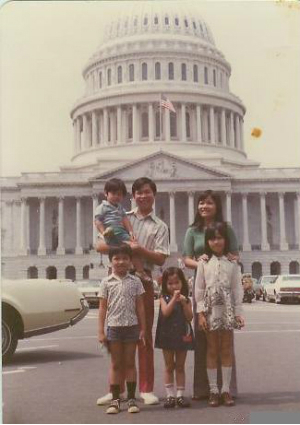
Today on behalf of my
family, I wish to thank Commander Russ Bell, U.S. Navy (Retired) and the crew
of USS Barbour County. Also, thank you to Uncle Ed -- Colonel Ed
Rowe, U.S Army (Retired) -- and his wonderful family for sponsoring us all
those years ago... and happy 39th birthday to my dear brother, Phil.
Commander
Hung Ba Le was the commanding officer of the Arleigh Burke-class guided missile
destroyer
USS Lassen
(DDG 82) from April 2009 to December 2010. One of seven
destroyers assigned to Destroyer Squadron 15, forward-deployed to Yokosuka,
Japan, Lassen's namesake is Commander
Clyde E. Lassen
, who received
the Medal of Honor for his courageous rescue of two downed aviators while
commander of a search and rescue helicopter in Vietnam. Commander Le is
currently serving as a fellow at Harvard University's Weatherhead Center for
International Affairs in Cambridge, MA.
May 1, 2013
Watching Iraq on the edge, and wondering what the United States will do
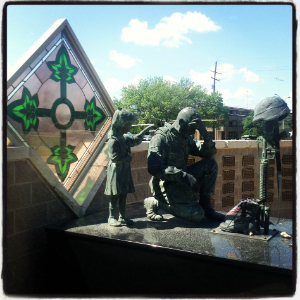
By Emma Sky
Best Defense bureau
chief, Iraq
The famous Iraqi sociologist, Ali Wardi, wrote about the
dual personalities of Iraqis. For many of us who served in Iraq, this is something we also seem to
have developed.
I spent the weekend in Texas, staying with American friends
I served with in Iraq. Although we had not seen each other in years,
conversation came easily. Our shared experiences away at war had created
life-long bonds. We reminisced about our time together -- the sense of purpose,
the camaraderie, our small victories. We laughed. We drank. We ate unhealthy
fast food. We gossiped about people we knew. Together, we visited the memorial
at Fort Hood to pay our respects to the 450 soldiers from the 4th Infantry
Division killed in Iraq.
But all weekend I also surfed the Internet for news and
chatted with Iraqi friends. Iraq is spiraling out of control. Following the arrests in December
of the bodyguards of Finance Minister Rafi Issawi, Sunnis took to the streets,
revealing their widespread sense of alienation in the new Iraq and demanding
the end of what they consider a government policy to marginalize them. As with
other protests in the Arab world, they were initially driven by legitimate
grievances. But against the backdrop of provincial elections, little was done
to address the concerns of the protestors -- despite calls to do so from the
top Shia cleric, Ayatollah Sistani. Politicians instead exploited the
demonstrations for electoral gains. President Maliki took the opportunity to
distract attention away from the lack of services and rampant corruption,
presenting himself as the defender of the Shia, in the face of Sunni regional
powers intent on overthrowing Shia regimes -- Syria first, then Iraq. Sunni
politicians, for their part, sought to benefit from the demonstrations to rail
against government oppression to gain support for their own electoral
campaigns.
Last week, the Iraqi Army entered Hawija, near Kirkuk, to arrest people
accused of attacking Iraqi Security Forces. In the ensuing violence, 200 people
were killed. There are reports of desertions from the Iraqi Army. Kurds have
moved peshmerga into positions in the disputed
territories. Tribes are forming militias to protect themselves from the Iraqi Army.
Five Iraqi soldiers were killed in Anbar -- and the province has been put under
curfew. Ten satellite channels, including al-Jazeera, have been banned, accused
of spreading sectarianism. Bombs exploded in Shia towns. The speaker of parliament
called for the government to resign and for early elections.
By seeking to eliminate his Sunni rivals, Maliki has removed
the wedge that the U.S. military drove between Sunni extremists and the Sunni
mainstream during the Surge, at such great cost. There is a growing sense that
the conflicts in Syria and Iraq are merging into one, with Shia regimes, backed
by Iran, battling against Sunnis, including al Qaeda elements. We may be
witnessing the breakdown of the post-WW I settlement and the nation-states
established under the Sykes-Picot agreement.
Many Iraqis still cannot fathom how the United States could lose
interest in Iraq
and simply walk away after so much investment. They explain it in terms of
conspiracy theories: a "secret agreement" between the United States and Iran; a
"deal" between Biden and Maliki to divide up Iraq.
Will our legacy from the Iraq war be a regional power
struggle ignited by the resurgence of Iran, the contagion of sectarianism into
Syria, the horrific violence of jihadist groups? Is this in our national
interest? Can we not do more to make Iraq a more positive influence in its
neighborhood?
As the situation deteriorates, I wonder, will the United States
proactively develop, articulate, and adopt strategies to engender a better balance
of power in the region -- or reactively respond to the inevitable fallout with
tactical measures.
Emma Sky is a senior fellow at Yale University's Jackson
Institute. She served in Iraq 2003-2004 as the governorate coordinator of
Kirkuk for the Coalition Provisional Authority, and 2007-2010 as the political
advisor to General Odierno.
Time to get serious about national service
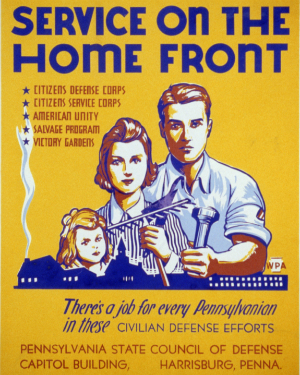
By
Col. Margaret Cope, USAF (Ret.)
Best
Defense guest columnist
After serving 30 years in the Air Force, I am
passionate about our country providing the opportunity for young men and women
to serve. Since the draft ended, the American public has become disconnected
from the men and women in the military.
Even our former secretary of defense Robert
Gates stated that our citizens view our wars as an "abstraction" that does not
affect them personally. After 9/11 our country missed an enormous opportunity
to engage the citizenry, particularly folks in the 18-26 age range who are
beginning their adult lives and have the ability to contribute the rest of
their lives.
Our country has a democratic form of government,
which by definition is a participatory government, not a spectator government. All
citizens must be engaged or we risk losing our democracy. Our founding fathers
believed all would participate as stated by George Washington, "It may be laid
down as a primary position, and the basis of our system, that every Citizen who
enjoys the protection of a free Government, owes not only a proportion of his
property, but even of his personal services to the defense of it."
Currently less than 1 percent of Americans
serve in our military. The rest of the population -- 99 percent, for the most
part -- is unaware of the military. Although other forms of national service
exist, with the budget constraints, now is the time to consolidate and provide
more structured, safer, and meaningful opportunities.
My concept of the national service framework is
comprehensive and bold; it's not for those who like small steps and fear
transformative, big ideas. National Service will be voluntary and must include
the military -- the most committed, professional, well-trained example of
national service.
This framework is based on voluntary
participation and provides a menu of opportunities for citizens between the ages
of 18-26 to serve. All volunteers will serve a minimum of two years and will
receive lodging, uniforms, healthcare and food allowances, stipends, and upon
completion of their term of service, numerous government incentives tied to
performance, to include at least an education debt reduction or an education
allowance similar to the GI Bill and other options to support the national
service mission, its culture. Libertarians who don't want to serve would be
ineligible for some government incentives including student loans, to be given
upon completion of the term of service.
National Service will be the umbrella
organization for the entire enterprise with the pillars being: the military,
which would include recruitment, orientation training, and upon completion of
service, the same national service benefits along with military benefits; the
Corporation for National and Community Service (CNCS) organizations including
Americorps, VISTA, Equal Justice Works, Teach for America, and Children's
Corps; the Peace Corps; a revival of the Civilian Conservation Corps; a medical
corps; a legal corps (move Equal Justice Works from CNCS); an administrative
corps; a cybersecurity corps; and others. All of these functions could support
our military and serve on military reservations.
As a nation, we cannot underestimate the
importance in a moral democracy to serve. We must engage our greatest resource,
our young citizens, to serve others and uphold our democratic principles to
attain opportunity and inspire hope.
Margaret
Cope, a retired U.S. Air Force logistics colonel, serves on the Executive
Committee at the Reserve Officers Association (ROA), consults, and is a former
senior advisor at the Project on National Security Reform (PNSR).
Army general: We need to figure out who we are and what we Americans really want

By
Brig. Gen. Kim Field, U.S. Army
Best
Defense guest columnist
As a general officer and a mother of four sons,
I still look back on our entry into the Iraq War with disbelief. There may have
been good reason, but explanations to date satisfy almost no one. I deployed
three times to Afghanistan and better understood our entry, even if the
prosecution of our effort became increasingly baffling. I am dismayed that my
sons are learning in school to lump the wars in Afghanistan and Iraq into the
same causal bucket. What are they learning about who America is, what we stand
for, why we do what we do?
Recently, there was an article in the New York Times about the split in the Republican
Party on the appropriate foreign policy stance for America. To oversimplify,
isolationists are warring with the traditional aggressive foreign policy
advocates under the same tent. Further, the article was a bit shocking in that
foreign policy was equated with use of the military instrument. How can any of
this be?
The Democratic Party is a little more coherent,
but I am not sure that there is agreement with Jimmy Carter's statement: "Human rights is the soul of our foreign
policy, because human rights is the very soul of our sense of nationhood."
Right or wrong, under Democratic leadership, we have done almost nothing in
Syria to protect human rights. Is "human rights" the most important thing to
our country and is this how we should represent ourselves to the world?
Inside the Pentagon, I watch and in some cases
participate as we wrangle over the "rebalance to the Pacific." Should the
military really be the agency doing the most in what was a reasonable shift in
strategic emphasis? Maybe, but the explanations why are not satisfying and Air-Sea
Battle is downright mystifying. Do we intend to "contain" China, and if so, do
we mean militarily, economically, in the information domain? Or do we want to
"shape her decisions?" Something else? These are very different paths with
significant consequence, and to my mind, we should have the answers before we
charge off, possibly committing billions of dollars.
What do we stand for? Many of us think domestic
policies are likely on an inevitable path toward a more European model of
capitalism-social consciousness and think our choices with regard to
international matters are indeed more free and more significant. But watching
the machinations of the Congress over forced across-the-board cuts (sequestration),
feeling confident that DOD could take a cut but not the way we are forced to do
it, it is clear that this problem of identity is foundational to all dimensions
of what we do as a country.
As a soldier, I have nothing to say about
wither our foreign policy endeavors. But I sure wish I understood better what
we could be asked to do and why. How is the military to represent itself
overseas when our muddled sense of American identity is reflected in so many
testy issues, beyond the normal and healthy tensions of party politics?
Having taught international relations theory
for three years, I do believe when the strength of our values coincides with
the level of our national interest, we have the makings of good, sustainable
foreign interventions. But this means understanding what our values are, who we
are as Americans. Do we still believe in American exceptionalism? If so, why? What
makes us exceptional a decade into the 21st century? We should be specific and
clear about this in a necessary debate.
Just as senior military officers should be
professionally guided by the conviction of clear personal values and not just
the Army Values dogtag around their necks, it is insufficient for the
collective American people to point to the Constitution as a clear, present day
expression of who we are. The base case is there, but it's not always helpful
in execution. Sacrilege.
It will be very difficult to avoid diving into
the issues of immigration and healthcare and countless other issues through
which party divides run deep. And a Congress that makes DOD accept
compensations it doesn't ask for even when that means we reduce the training
that will keep soldiers alive in the future, a Congress that makes us buy
equipment we don't want beyond that which keeps the industrial base warm, can't
lead this effort. The Congress is full of smart, well-intentioned individuals
held captive by a system that cannot help us produce a sense of identity that
would then enable meaningful party debates over how to make that identity come
alive. The president is a party member. He can't lead this either, no matter
how good a leader he is.
I believe the American people want this
discussion. I do not believe the military has the market on service. I do not
believe the average American values his or her Nikes and iPhones more than they
do a conversation over what it means to be an American. My sister-teacher, as
well as good friends Paul Yingling and John Nagl, who have chosen to leave the
world of security affairs for the profession of teaching, will be part of this
debate, as will their students. My father and his senior friends who have time,
interest, and continued desire to serve, will be part of this. My boys and
nieces and their classmates, all of whom had to complete community service on
the path to college, will be part of this. Servicemembers will be part of this
as long as the issues do not become partisan. And so many more from so many
other walks of American life. I am tired of hearing that Americans need the
most important of issues dumbed down, that we simply don't care about anything
that does not directly affect the material goods that come into our homes. I
don't believe it. In fact, I can't even contemplate the possibility of leaving
my boys without a mother for years, or forever, if this were the case.
I am so honored to serve the way I do --
representing a people that comprise a country of goodness the world has never
before seen. We have to stop the recent wandering that has confused so many
inside our ranks, within our borders, and throughout the world. As we bring the
face of America home after 12 years of steady war and before we inevitably send
it out again, greater clarity on the question, "who are we, we Americans?" is
essential.
BG Kim Field is deputy director of
policy, plans and strategy on the Army staff. She has served three tours in
Afghanistan, two tours with State, and taught international relations in the
"Sosh" Department at West Point.
Thomas E. Ricks's Blog
- Thomas E. Ricks's profile
- 436 followers



